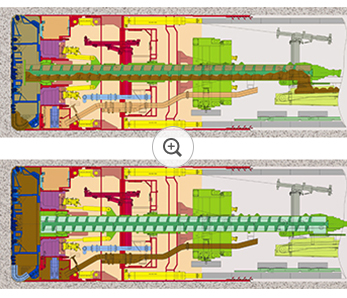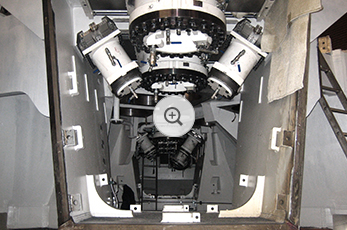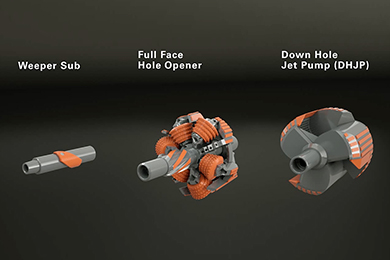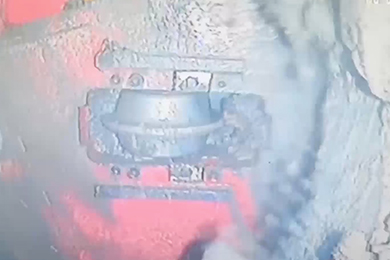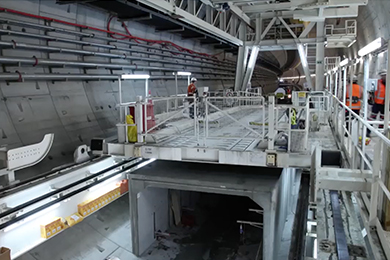Herrenknecht has been manufacturing modern hydraulic HDD rigs for years. This machine technology has now been adapted for the newly-developed SDD method (Slant Directional Drilling). It represents a combination of HDD (Horizontal Directional Drilling) and classic vertical drilling. The new method can be used for exploring so-called unconventional raw materials, e.g. oil sands, or for degassing coal seams.
An important area of application for the innovative machines is the access to oil sands. Eight SDD rigs from Herrenknecht are currently working worldwide using the so-called SAGD method (Steam Assisted Gravity Drainage). For this, two boreholes one above the other are needed. Through the upper hole, steam is forced into the oil sands at pressure through filter pipes. The surrounding oil heats up, becomes more liquid and flows down into the lower pipe. From there, it is pumped away and processed further on the surface.
Another area of application is represented by so-called CSG projects (coal seam gas) where gas is present in deeper coal seams. With SDD rigs, you can quickly drill down to the appropriate depth and then deflect the borehole into the horizontal. You follow the soil layer you are looking for directly in the formation. With the installed rack & pinion drive and taking into consideration the permissible thrust forces, the drill string can be actively pushed forward. This means that considerably longer horizontal deflections can be achieved enabling effective purging of gas from the seams before the coal is extracted by mining.
With Herrenknecht SDD rigs, both methods can be carried out. Drilling companies investing in such a machine are flexible on the market.
Your contact person:
Andreas Steilen
Product Manager Pipeline | Utility Tunnelling
Tel. +49 7824 302 5220
Steilen.Andreas(at)herrenknecht.de








